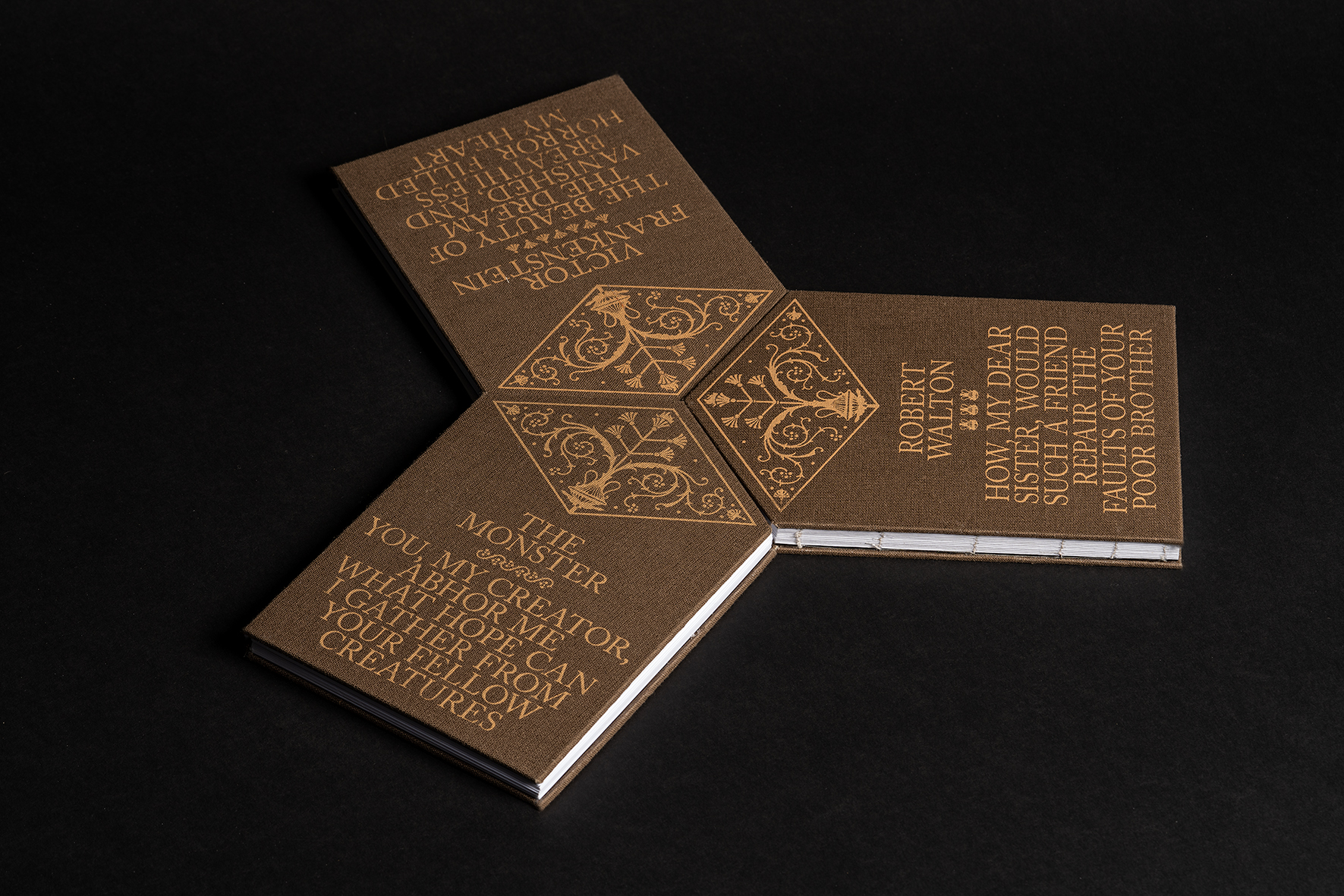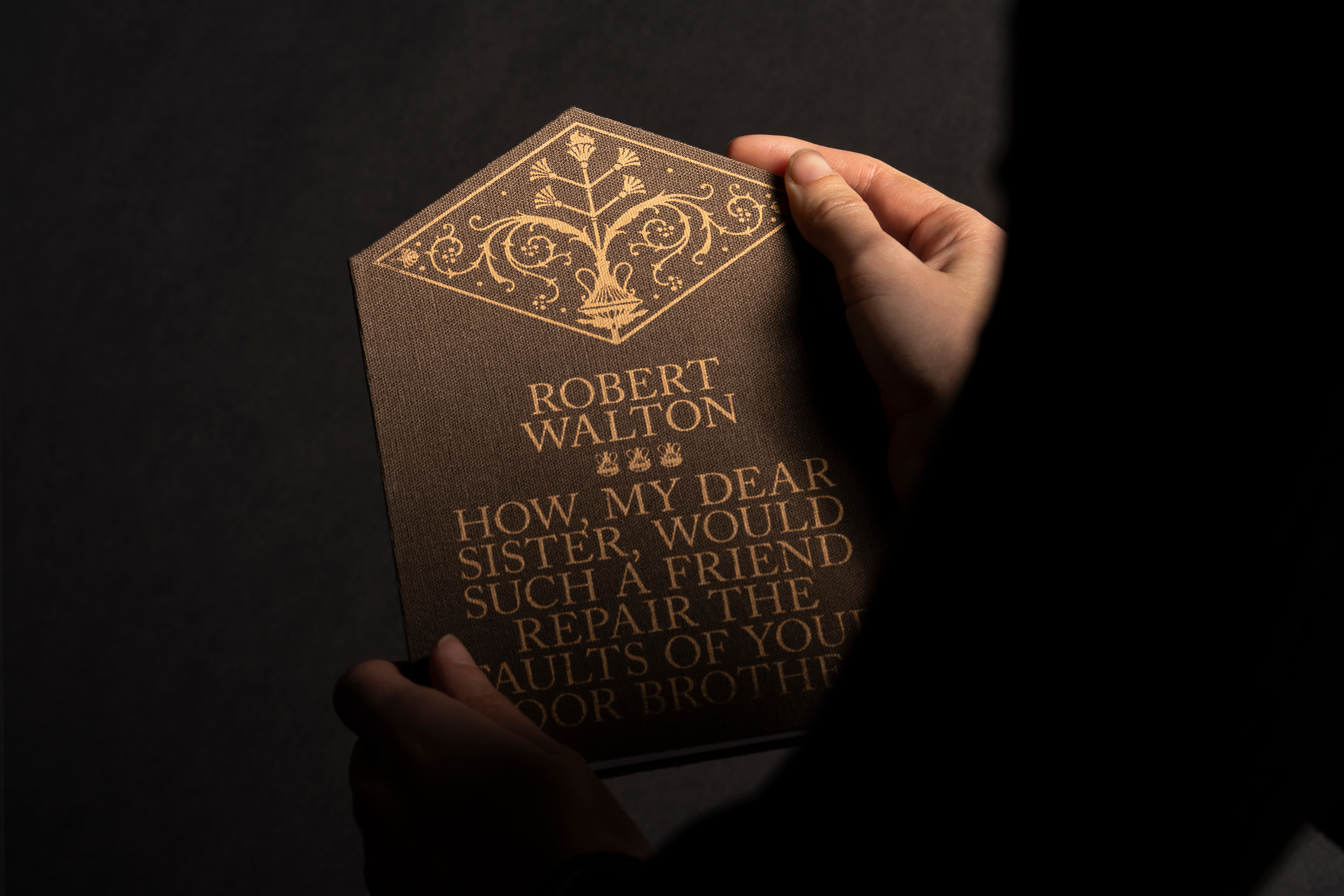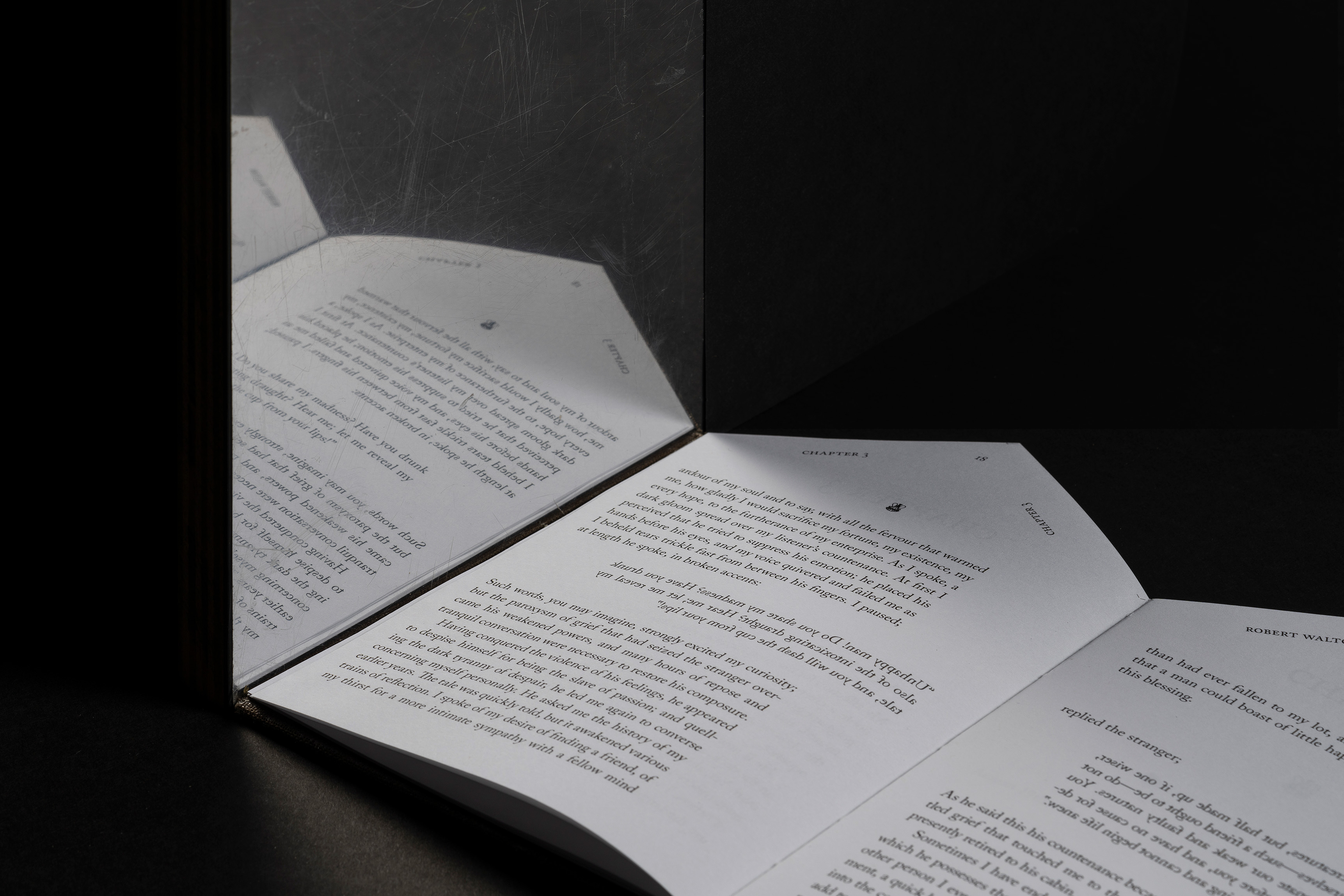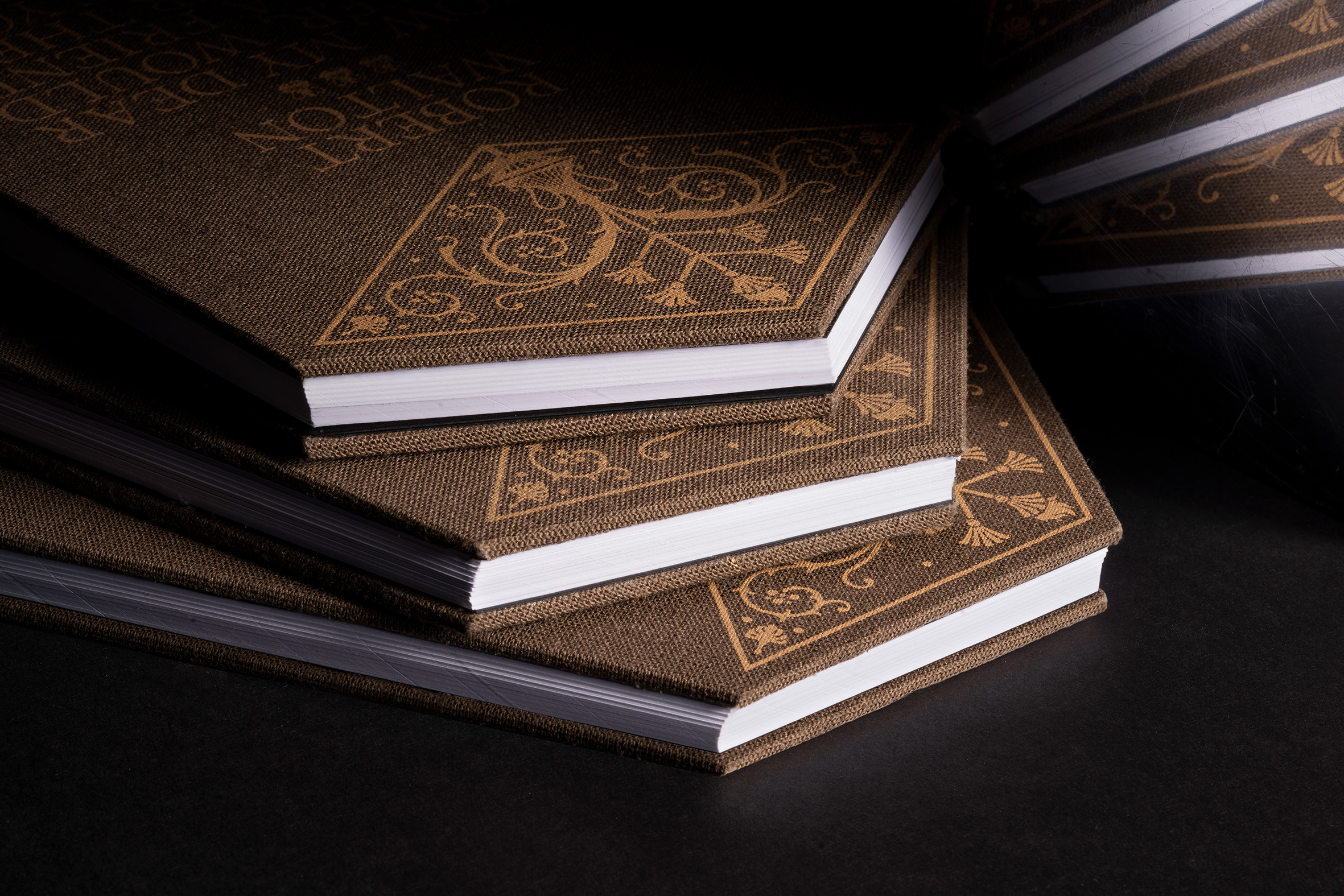↓
the story of frankenstein
book design
( 2 )
The Story of Frankenstein is a visual re-imagining of
the famous novel by Mary Shelley. Through the metaphoric use of the kaleidoscope,
it explores the way the individual mirrors themselves to the other, against the
back-drop of the romantic-individualism of the novel, and offers a critique of
this relation through the use of Karpman’s Drama Triangle—a social model of human
interaction that maps a type of destructive behaviour between people in conflict.
A tool used in psychotherapy, which is here used to analyse the interaction between
the main characters.
The books visually convey the workings of the Drama Triangle by showing, in each edition,
only one side of one of the three narrator’s stories, showing the text where there’s a monologue
and mirroring the lines spoken bij another character whenever there is dialogue, stressing the
unwillingness of all characters to consider each others point-of-view, which lies at the heart
of their destructive behaviour. It pushes them back more and more into their own cognitive world,
and creates a bigger space between them.
This design makes it essential to have all the books together to be able to follow the whole story,
considering it from all sides, and so shows how we can’t make full sense of ourselves, or our own
behaviour in a situation, without it being reflected back at us by others.





I'm a graphic designer and aspiring publisher currently based in Rotterdam, the Netherlands. My main practice focusses on book designs with a conceptual angle, trying to grasp the nature of the book/publication as object, and, increasingly, it's political implications. Materially and thematically, I'm interested in the notion of transparency and reflectivity. These are elements that always come back in my work somehow.
Next to physical, I also work with digital publication methods, in the form of web-develpment.